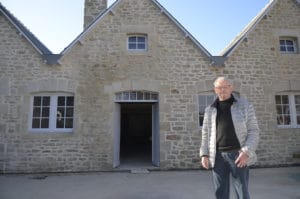" Heritage is something that is very close to my heart, as it is to my friends in Local History. I enjoy showing visitors the fishing port. The Local History Association is also involved in the development of the parish enclosures. We have mapped all the wells and fountains. For me, that's what heritage enhancement is all about. We love the history of our territory and we want to share it with as many people as possible. Thanks to the canning museum, there will be even more visitors with whom to share our passion. "Patrick Chever, former fisherman
After spending a good part of his life at sea, including 20 years at the helm of his own trawler as a shipowner, Patrick Chever is still very attached to the maritime world. An active volunteer for many years within the local history association, he has also been involved since 2017 with the association of the Friends of the Alexis Le Gall cannery (ACAL). A fine naval model-maker, keen on history and archival research, this lover of Loctudy did not hesitate to give part of his collection of period photographs to the bearers of the museum project of the Alexis Le Gall cannery. He tells us about his journey and his commitment.
His background professional
I have been a fisherman all my life. I spent about forty years at sea, on a trawler. I went to sea in 1961, at the very beginning of the port of Loctudy. My first passion is fishing. I fished for langoustine for many years. I am also passionate about the 1914-18 war because of the many wrecks that sank in front of us at that time.
Loctudy is my commune. I was born there. Its port is like my second home. I have seen all its evolution. I was interested in the archives that tell the story of the beginnings of the development of the port, around 1847, a time when I was not yet born, and the history of the potato industry through the commercial port, before the development of the fishing port. I was part of the team that opened the first fish market in Loctudy in 1965. I then witnessed the evolution of the fishing port until the creation of the marina in 1991.
My initial job was to catch fish, not to work or sell it. I discovered the Alexis Le Gall cannery through Pierre Quillivic, Jean Laouénan and Daniel Le Prince.
its notion of heritage
Heritage is something that is very close to my heart, as it is to my friends in Local History. I enjoy showing visitors the fishing port. I'm a specialist in this part of the town's history. I present the different ways of fishing, all the fishing gear, from the hemp trawl with which I started my career, to the polypropylene used as material for today's ships. These are subjects that have always interested me. The Local History Association is also involved in the development of the parish enclosures. We have mapped all the wells and fountains. For me, this is what heritage enhancement is all about. We love the history of our territory and we want to share it with as many people as possible. Thanks to the canning museum, there will be even more visitors with whom to share our passion.
Its role in the of the museum project
As I am very attached to the port of Loctudy, to my job and to the history of my town, when I learned that the town council was committing itself to such a project, I said to myself: "that's great! I wasn't one of the very first volunteers to dismantle the factory's equipment, simply because I didn't know at the time that this type of initiative had been launched. When I heard that Guy Cosnard had created the association of the Friends of the Alexis Le Gall cannery, I said to myself: "We have to go! I joined the association in its second year of existence. As an active member of the association Histoire Locale, I suggested to my friends to do the same, saying: "It would be a shame to miss this project. Our town is lucky to have a very well preserved cannery. There are no others in the area. We have to go there". Everyone at Local History said "OK". As I am a collector of period photographs, I donated the rights to distribute a certain number of them to Jean Laouenan and Pierre Quillivic, for the museum project of the Alexis Le Gall cannery.
its great challenges
I know that there is a whole team that has had to face many challenges to bring this project to fruition. I am thinking in particular of Jean Laouénan, Pierre Quillivic, Pierre-Jean Desfossé, Daniel Le Prince and Serge Duigou. Personally, I did not have any particular challenge to meet on this project. I contributed by donating my collection of photographs. This museum project has above all allowed me to learn about the processing of sardines, of which I knew absolutely nothing before. Although I knew very well how the langoustine trade worked and how it was organised from the fish market, I knew nothing about sardines. It was Pierre [Quillivic] and Daniel [Le Prince] who introduced me to the workings of canneries. So I started studying the history of sardines and two years ago I went to Saint-Gilles-Croix-de-Vie to visit the canneries. I saw how it was done there and I can already tell you that it will be better at home!
its best souvenir
I think that my most beautiful memory is the one I create for myself today when I visit the museum, the work of which is almost complete. Seeing it today in its full glory - having known it in its advanced state of dilapidation - is a great victory. The fact that I have had the opportunity to follow the evolution of the project throughout its transformation allows me to measure the progress made and to say that it was really worth it. Today, for the project to be a success, all Loctudists must adopt it. I hope with all my heart that the project will be a source of pride for all the inhabitants. Personally, I hope that I will soon have the opportunity to show visitors the cannery museum, as I am showing them the port today.


